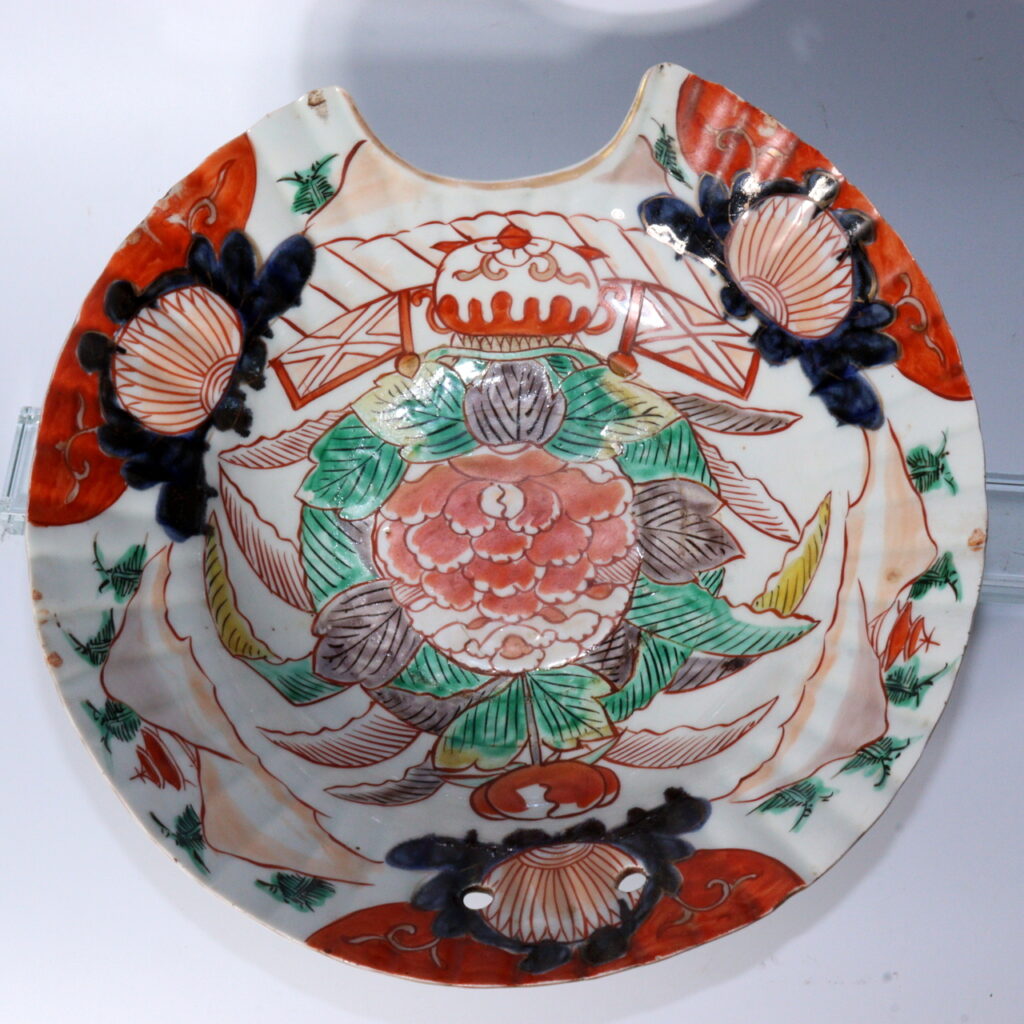
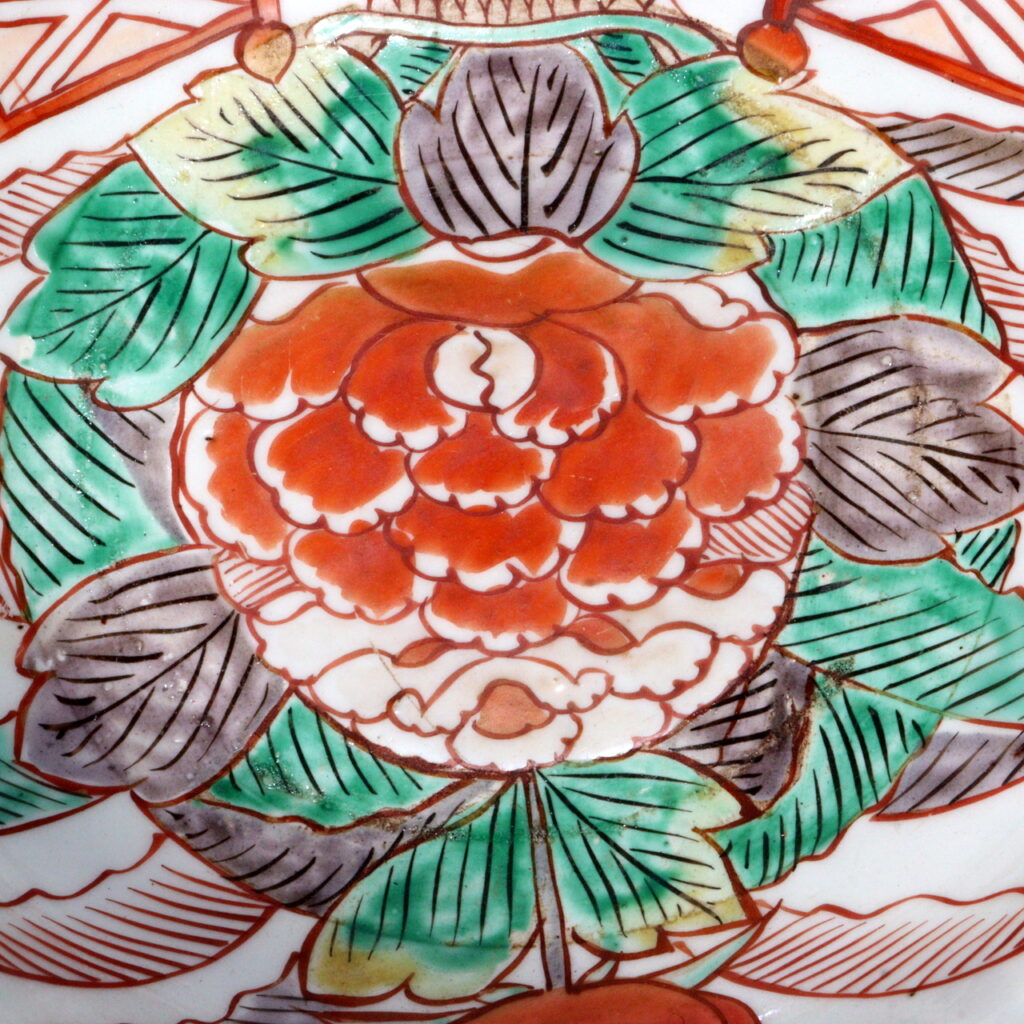
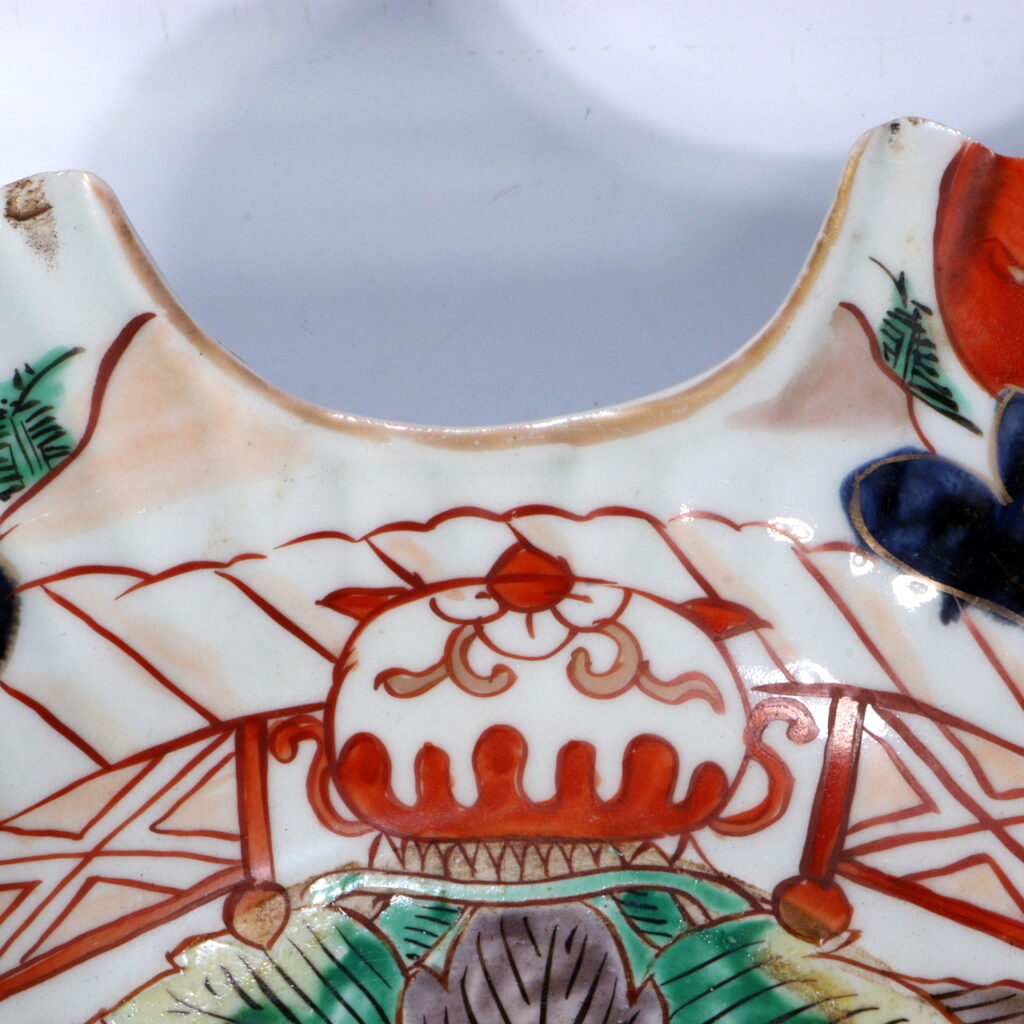
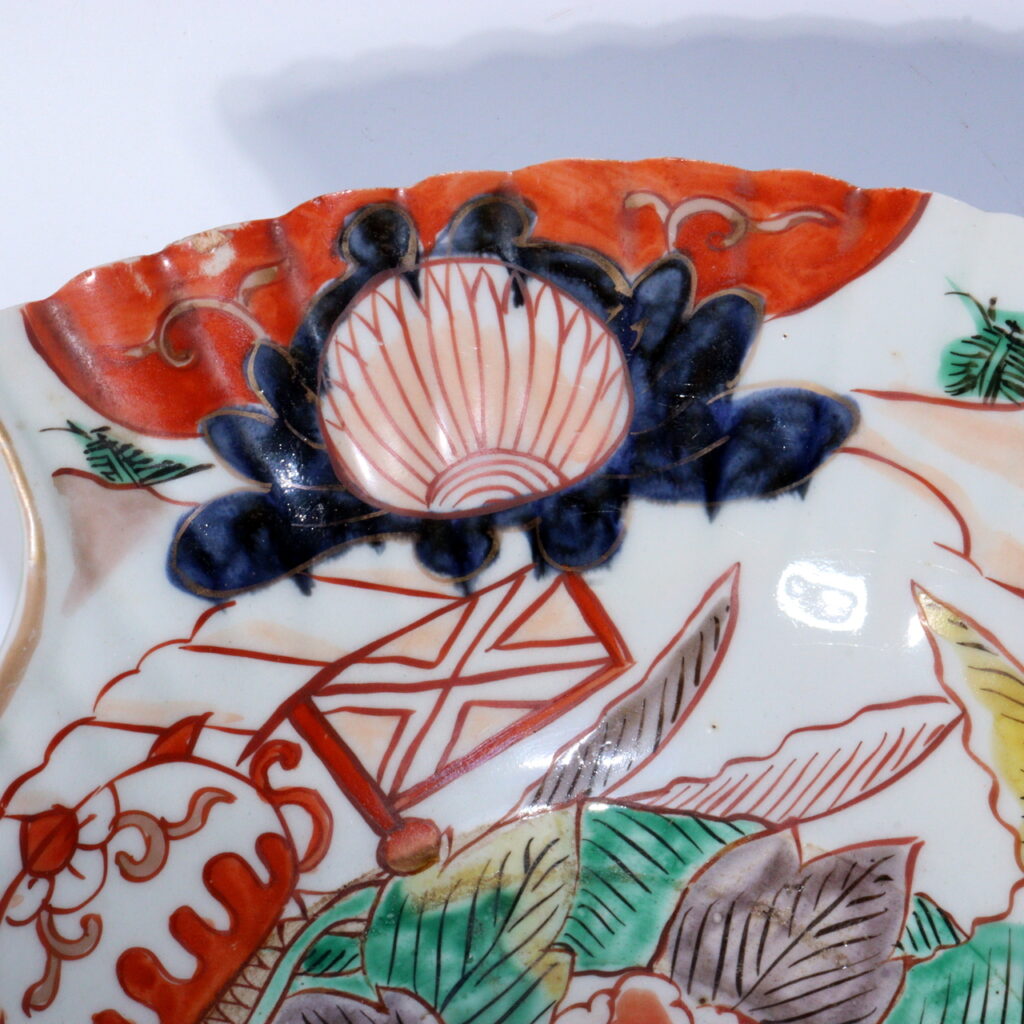
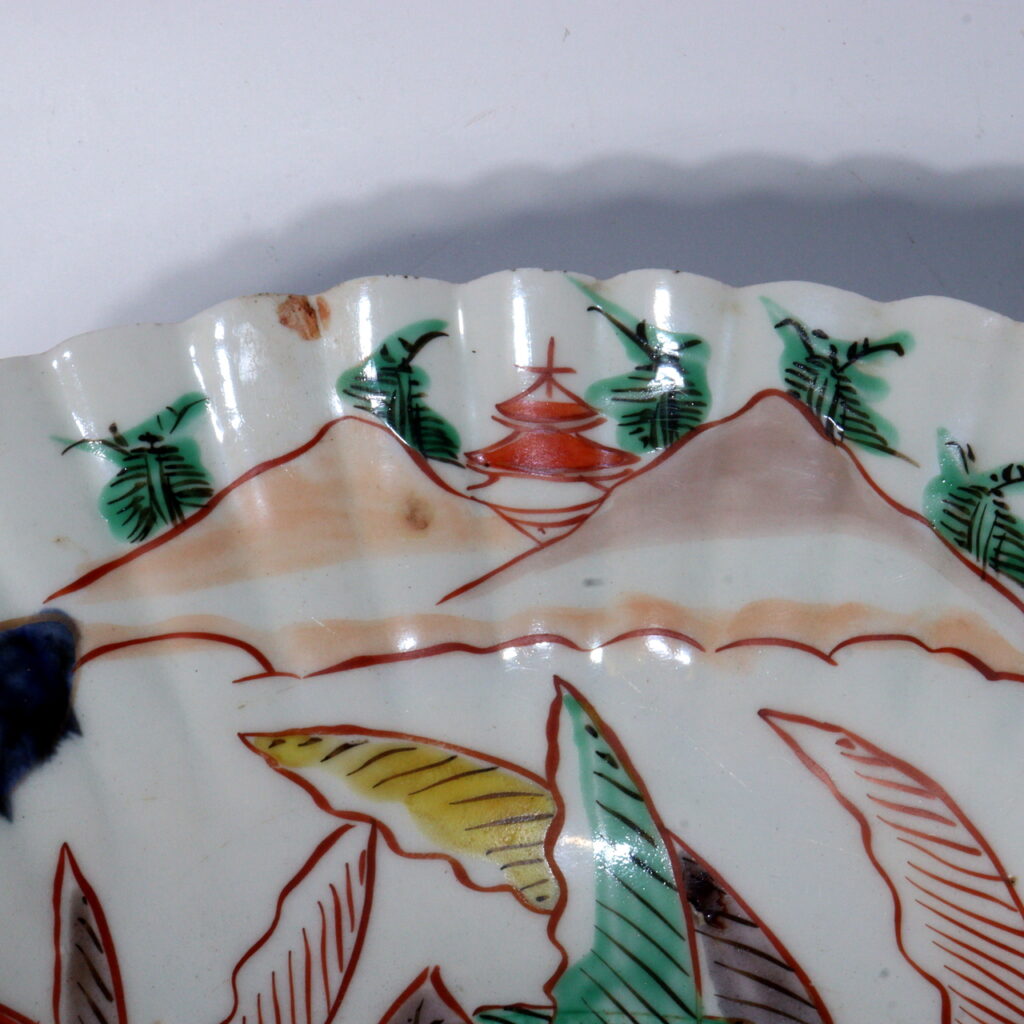
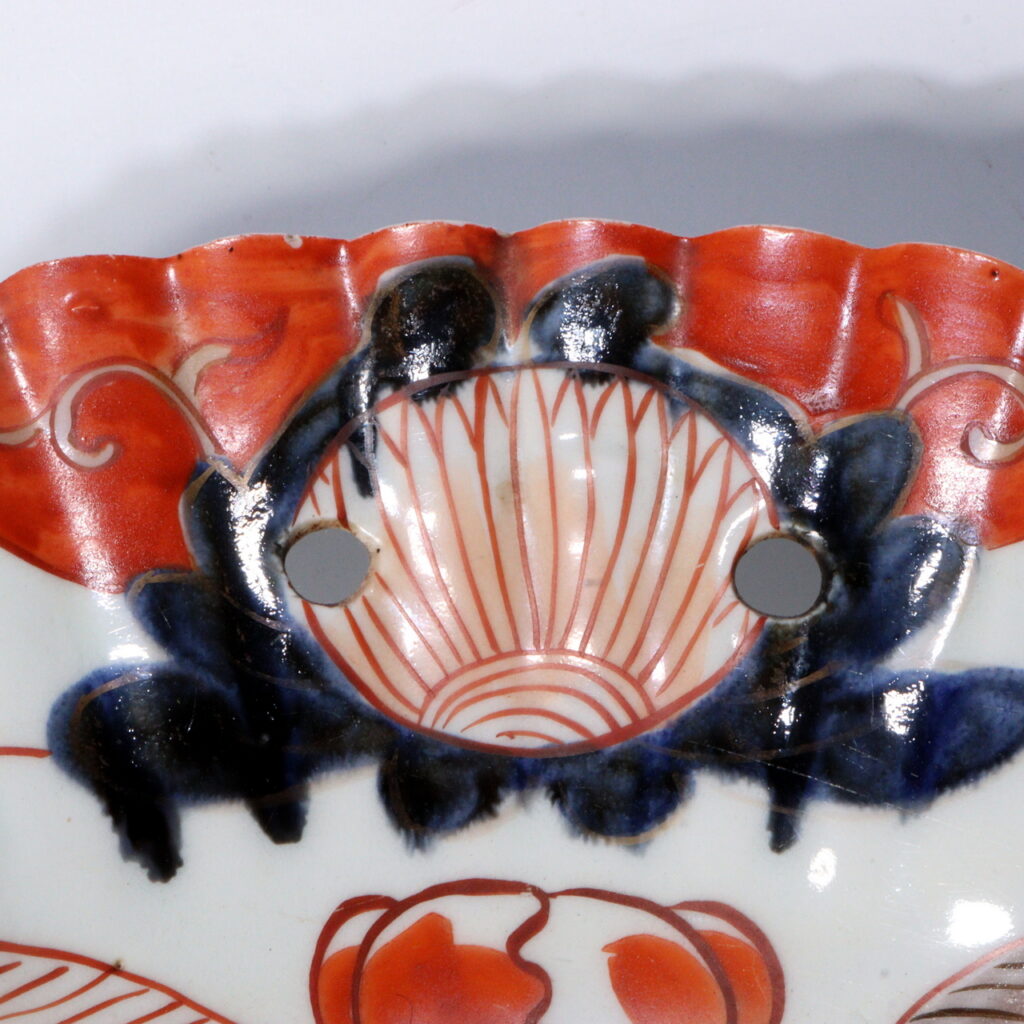
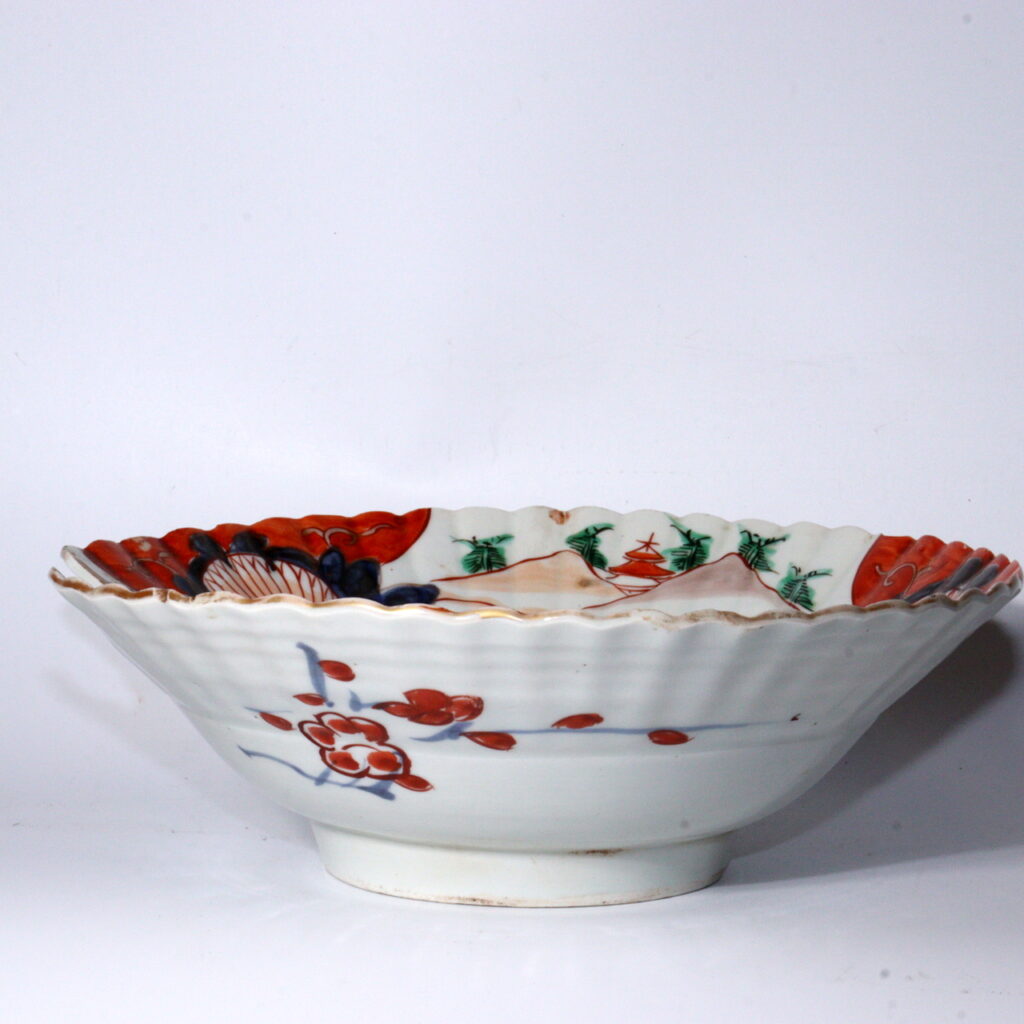
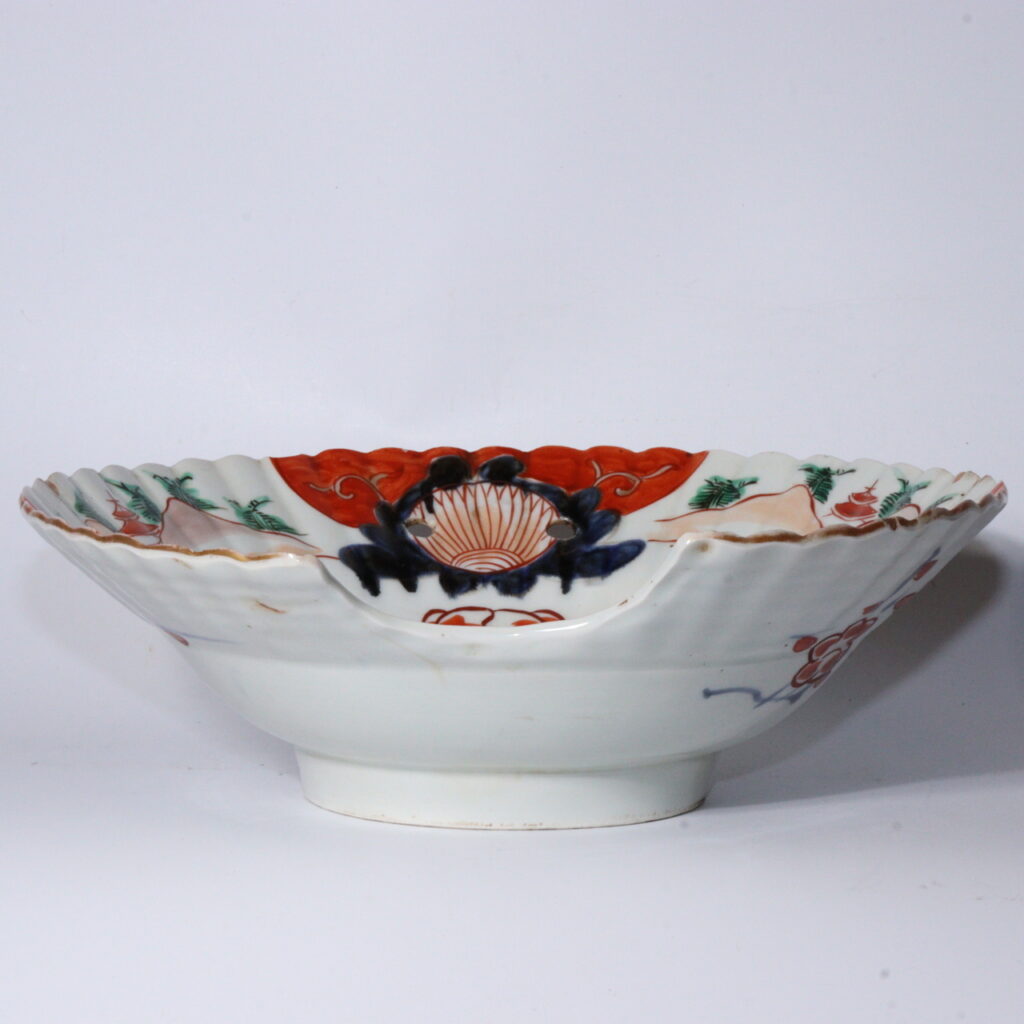
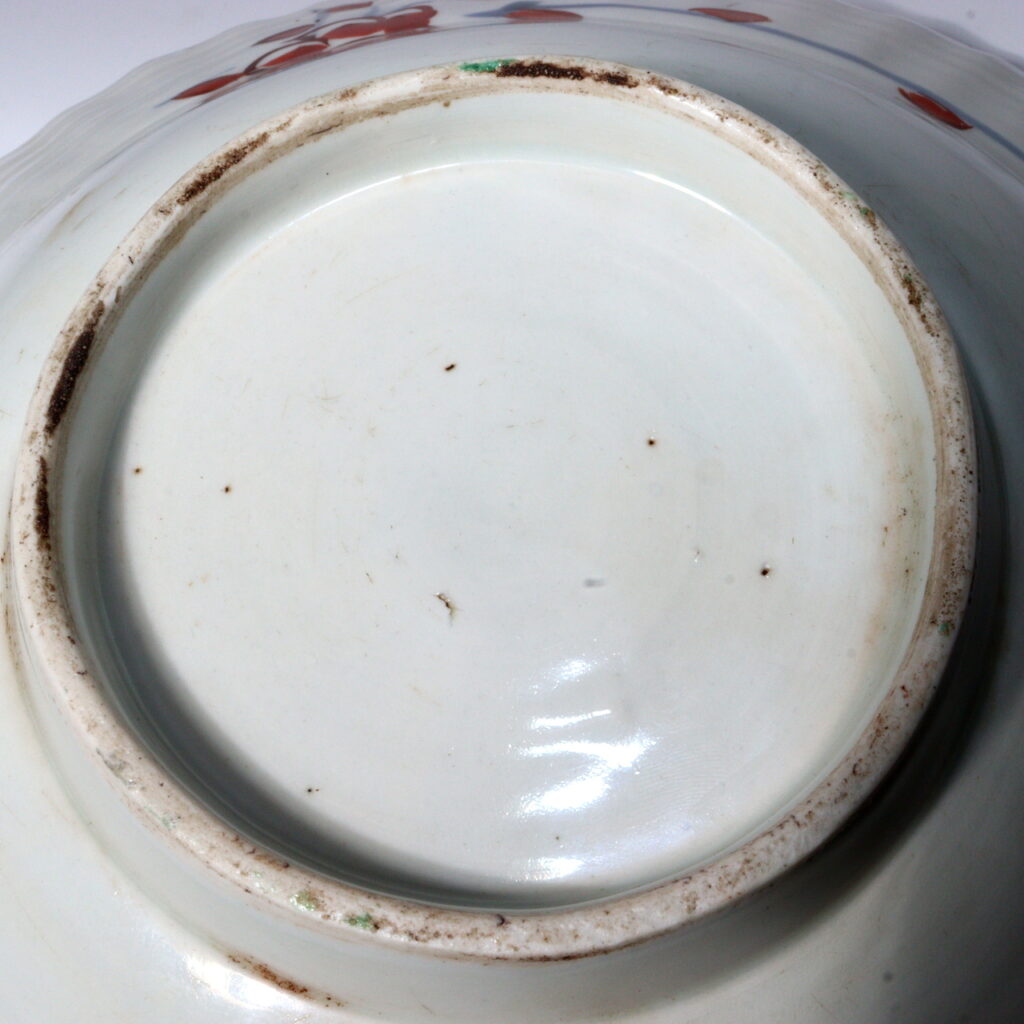
Antique Japanese Ko-Imari Polychrome Shaving Bowl (Higezara) – 17th Century Arita Porcelain
Introduction
Among the many treasures of Japanese antiques, few are as fascinating in both form and history as the Ko-Imari shaving bowl, or “Higezara.” This remarkable porcelain piece, dating from the Genroku Era (1688–1704), not only showcases the beauty of Imari polychrome decoration but also reflects the vibrant cultural exchanges between Japan and Europe during the Edo period.
The Story Behind This Item
The Genroku era marked the height of Edo-period cultural prosperity, and Arita kilns were producing exquisite wares for both domestic and overseas markets. Ko-Imari porcelain, with its distinctive palette of orange-red, indigo blue, green, and white, became one of Japan’s most celebrated exports, adorning the tables and interiors of European aristocracy.
The unique form of the Higezara—distinguished by its semi-circular cutout—has intrigued historians. The most widely accepted interpretation is that these bowls were used by European gentlemen as shaving bowls: the cutout allowed the chin to rest comfortably while the bowl collected water during grooming.
However, alternative theories suggest these vessels were used as bloodletting receptacles (shaketsu) in early medical practices, or as decorative wall hangings treasured for their striking polychrome beauty. Regardless of their original function, Higezara stand as testaments to the ingenuity of Japanese artisans and the global appeal of Imari ware.
The Charm and Highlights of This Piece
- Exquisite Ko-Imari Colors: A vibrant combination of orange, indigo, and green over fine white porcelain, characteristic of late 17th-century Arita production.
- Rare Form: The Higezara’s distinctive cutout design sets it apart from conventional bowls and enhances its collectible appeal.
- Cross-Cultural Significance: A rare Japanese ceramic form specifically adapted for European markets, reflecting the global reach of Imari ware.
- Versatile Beauty: Whether used historically as a shaving bowl, a medical vessel, or simply as decorative art, it embodies the multifaceted value of Edo-period porcelain.
Value for International Collectors
For collectors of Arita porcelain, Ko-Imari, and cross-cultural Japanese antiques, this Higezara is a rare and valuable find. Its combination of unusual form, striking decoration, and historical significance makes it a centerpiece in any collection.
While Meiji-period ceramics often reveal Western influences, this Edo-period Higezara reveals Japan’s direct engagement with European needs and tastes centuries earlier. It is both a functional object and an artwork, bridging continents and traditions.
Conclusion
This Antique Japanese Ko-Imari Polychrome Shaving Bowl (Higezara) from the 17th century Genroku era is a rare and exquisite piece of Japanese porcelain history. A genuine artifact of international exchange, it reflects the artistry of Arita kilns and the cultural dialogue between Japan and the West.
👉 View this item on Koedo Sun Art
If this piece is already sold, please explore our other curated collections here:
👉 Browse our collection of Japanese antiques